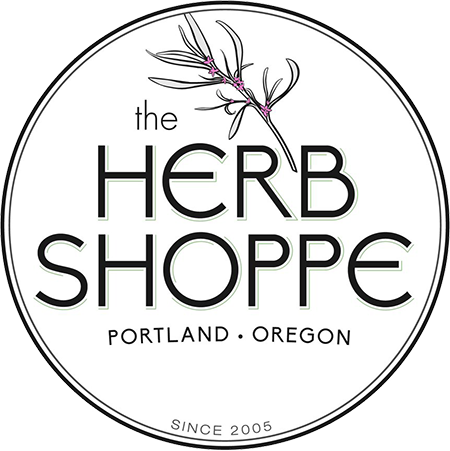Adorning the cracks of sidewalks and roadways, blanketing farmed fields and city parks, these small red and pink flowers like to sprout up in those often neglected natural areas and grassy fields. Chances are, most of us have seen this medicinal herb before. But, because red clover blossom is a small and common groundcover, it is often overlooked as a mere weed. Continue reading about March’s herb of the month to learn more about the medicinal properties and traditional values surrounding the nutrient-rich red clover blossom!
Trifolium pratense, or red clover blossom, is a perennial with a short life span that grows rapidly and wildly. Red clover blossom is a wildflower native to Europe, North America, Asia, and some regions of Africa. This herb has high nutritional value, and therefore is favored by not only herbalists, but also for farmers as it makes a great addition to feed for livestock! Many view this small flower as a weed, but to us herbalists, we recognize this small flower bud for its medicine and humble beauty.
Red clover has been recognized medicinally and spiritually for thousands of years, and has folklore that spans across many different ancient cultures. Despite red clover's presence in many different cultures, the spiritual ties and beliefs remain true, connecting red clover blossoms to fertility, abundance, and fortune. For example, as the red clover is related to the four-leaf cover, old Irish beliefs claim that the red clover carries good fortune and prosperity. In ancient Greek mythology, the red clover is associated with Hera, the goddess of marriage, women, and family, who used red clover blossoms to enhance her beauty and charm. Additionally, red clover represented fertility and conception to the ancient Egyptians. And to the Celtics, this red bud was associated with the goddess Brigid, who is the goddess of healing and fertility.
However, it is not just through legend and folklore that the red clover blossom has claims of fertility and abundance, but it is directly through this flower’s medicine that these beliefs of fertility reign true! Red clover blossom is most commonly recognized for its ability to assist in hormone regulation, specifically in regards to boosting estrogen levels in the body. Red clover blossom is a phytoestrogen, which means it has bioavailable estrogen that can be absorbed by our bloodstream naturally. This makes red clover blossom a great plant ally to those who struggle with low estrogen levels, PMS symptoms related to estrogen imbalances, or are going through menopause, especially if one is experiencing hot flashes.
The medicinal benefits of red clover blossom extend well beyond its renowned fertility and phytoestrogen qualities. Named “one of nature's best vitamin and mineral supplements” by famous herbalist Rosemary Gladstar, red clover blossoms contain magnesium, B vitamins, manganese, copper, potassium, zinc, calcium, vitamin c, beta-carotene, and more! Red clover blossom is a diuretic, meaning it helps the body secrete toxins through your sweat glands, and through the urinary tract. This makes red clover blossom a great plant ally for releasing excess water retention, fat, and for supporting the body's natural detox processes. In addition to it being a diuretic, red clover blossom is also recognized as an alternative herb, which means it helps to purify and cleanse the bloodstream. This warming herb also supports cardiovascular health by improving circulation and lowering blood pressure, and the immune system through its high vitamin C content. These blossoms also support bone health too, thanks to their high Calcium content.
When working with red clover, it is the aerial part (flower) of the herb that we work with medicinally. The flower is where all of the medicinal value in red clover lies, however, the entire plant is edible. I personally love adding red clover into my routine if my adrenal and immune systems feel sluggish. I love combining red clover with other nutrient dense herbs like nettle leaf, lemon balm, alfalfa, oatstraw, and moringa. The taste of red clover is light and earthy, and the brewed blossom tea turns a pretty light-orange hue. Red clover blossoms are a great herb to forage for beginners! They are commonly found, easy to identify, and are not an endangered or rare plant. As always though, it’s important to be respectful to the earth and plant whenever harvesting. Only take what you need!
All in all, red clover blossoms are a great herb to add into your life for supporting your overall wellness. Their high vitamin and mineral content, and ability to strengthen the immune, cardiovascular, and skeletal systems make these blossoms a “do-it-all” kind of plant! They’re the perfect plant ally for the beginning months of spring as we are seeking to detox the heaviness of winter, and begin anew with the seasons. Plus, you may be able to find the first few red clover blossoms popping up around this time of year. So, whether for spiritual abundance and fortune, or for increasing your overall health, red clover blossoms make a wonderful plant ally that you should get to know.
People who are pregnant, have high levels of estrogen, are on blood-thinning medication, or have low blood pressure should avoid red clover blossoms.
You can find red clover blossoms in our blends: Nutritive Beginnings Tincture, Nutritive Beginnings Tea, Essiac Tea, Achoo Away Tincture, Deep Clean Capsules, Deep Clean Powder, Achoo Away Capsules, Cold Season Support Tincture, Achoo Away Tea, Nighttime Cold Season Suport Tincture, Nourishing Balancer Tea, Cold Season Support Tea, Sore Throat Soother Honey, Nourishing Balancer Tincture, Achoo Away Honey, Rooted Grounding Ceremonial Myst, Throat Soother Tea, Throat Soother Tincture, Respiratory Relief Tincture, Respiratory Relief Tea
Sources:

